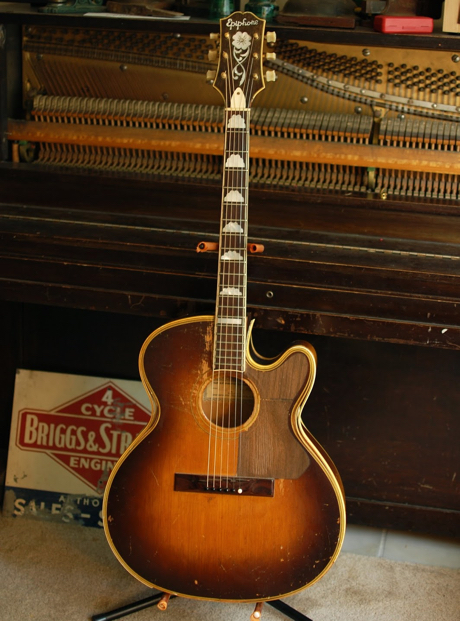
Close-up #10: 1954 F.T. DeLuxe Cutaway SN 67758
When the Epiphone Banjo Corp. strategically changed their focus to guitars in the early 1930s, they primarily introduced archtop models, inspired by Gibson's pioneering L-5. And although the company repeatedly tried to get their foot into the markets for flattop guitars and mandolins, archtop guitars remained Epiphone's most successful product category by far: According to our research, Epiphone's total production of acoustic guitars and mandolins during the 1931-1956 period is estimated to c. 30'000 units, of which no less than about 27'000 – or 90% – were archtop guitars! Flattops with an estimated total of around two thousand, and mandolins with half of that, were never more than a niche product. (Fairly successful were some of Epiphone's electric instruments and bass viols.)
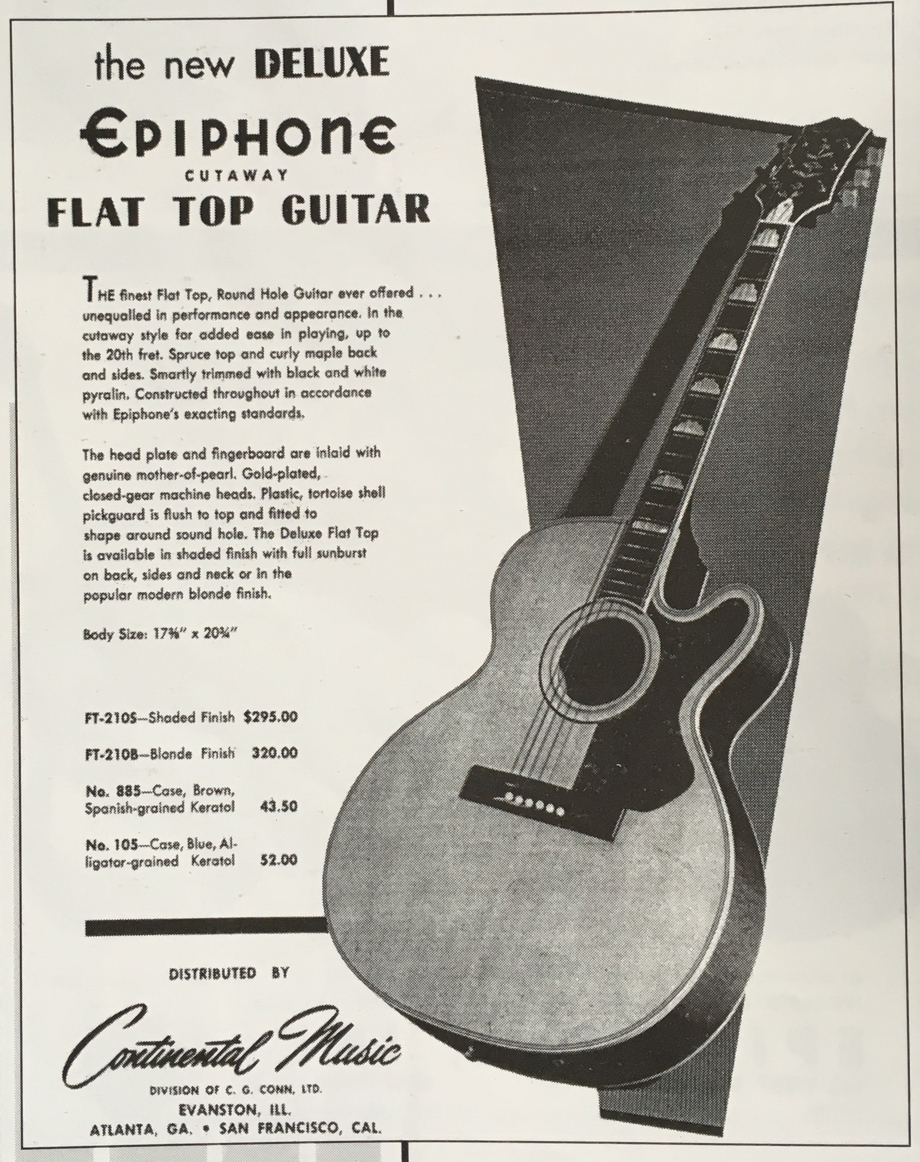
The early 1950s saw the rise of the solid body electric guitar, led by Gibson and Fender, however Epiphone missed that boat. Instead, one of the few new models the already struggling company launched was a high-end acoustic flattop model with cutaway body – named F.T. DeLuxe Cutaway, order number FT-210, available in shaded or blonde finish – see the pictured ad (source: Fisch 1996, p.164).
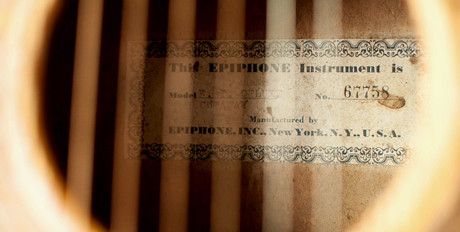
This example with SN 67758 is from the first of only 4 documented
batches of this model. Most of these photos are borrowed from the
excellent blog True
Vintage Guitar by John Shults.
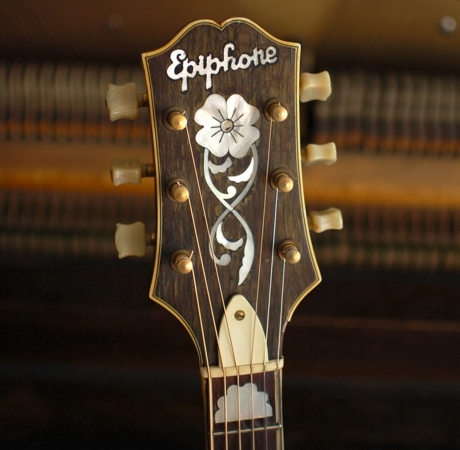
This new "DeLuxe" flattop took over some features of its archtop companion – e.g. "cloud" fretboard inlays, and gold-plated enclosed tuners. While the advert shows a headstock with the familiar "blossom branch" inlay, this example sports a large dogwood flower – an inlay introduced in 1950 on the Broadway model, but also seen on some late DeLuxe Cutaway and Zephyr DeLuxe Cutaway examples – and on most FT DeLuxe Cutaways. Interestingly, the first documented example of this same batch – SN 67732 – features the "vine" inlay of the pre-1950 Broadway. And another first-batch example – SN 67765 – has an archtop-style bridge and tailpiece, along with a slightly different flower inlay on the headstock.
By 1952 all Epiphone guitars had the neck reinforcement rod adjustment on the headstock, under a white plastic cover.
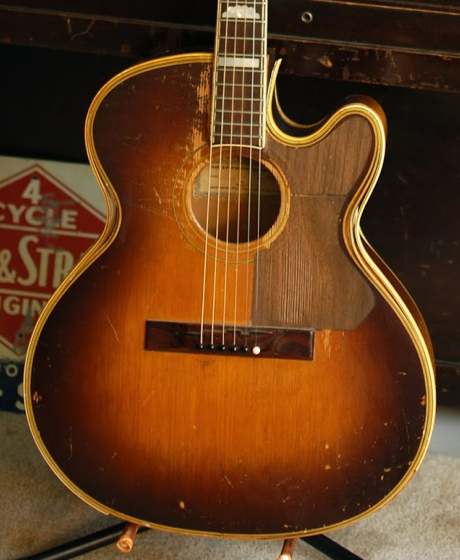
The round-hole flattop had a large 17 3/8" wide body with a rounded cutaway in the typical Epiphone shape. This example has lost its tortoise plastic pickguard which was shaped along the contours of the cutaway.
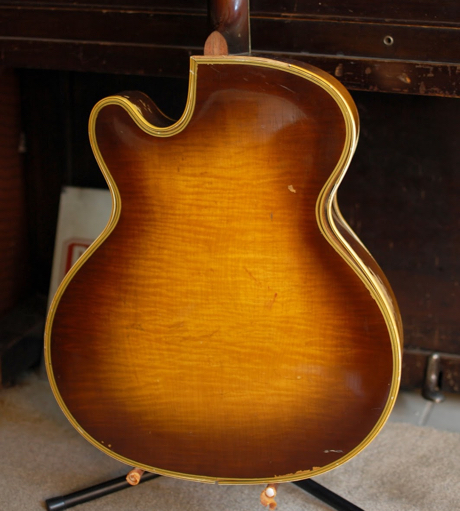
The maple back with stunning flame is a press-arched, laminated plate – dubbed "tone back" in Epiphone sales literature.
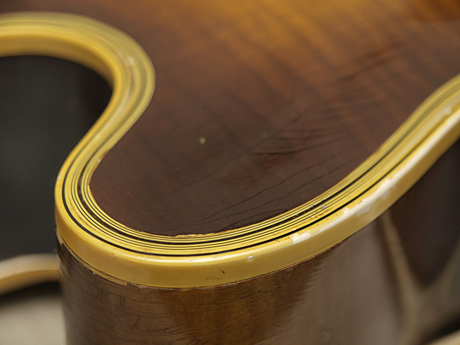
This example sports multiple, alternating black/white body binding – I count a least 13 layers! Like many 1950s Epiphone instruments, this example suffers from shrinking binding, pulling off at the waist.
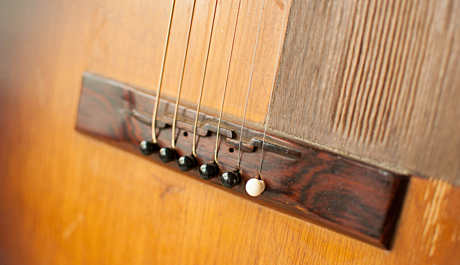
The original bridge is rather unusual, with a stepped saddle made of rosewood.
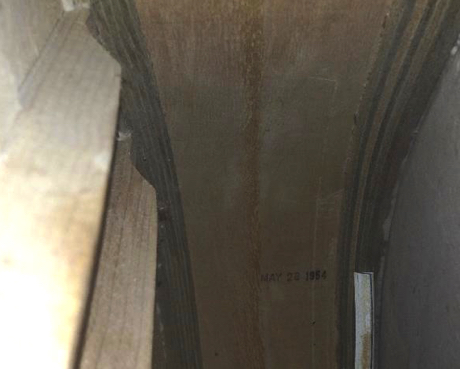
This inside view reveals a date stamp on the rim: "May 28 1954". Similar date stamps are also documented on other examples. Interesting is the lining which serves to attach the top and back to the rim: While most Epiphones have kerfed lining, some FTs of this era show this solid lining made of laminated wood strips.
The FT DeLuxe Cutaway had a ladder-braced top, like most (but not all) Epiphone flattops.
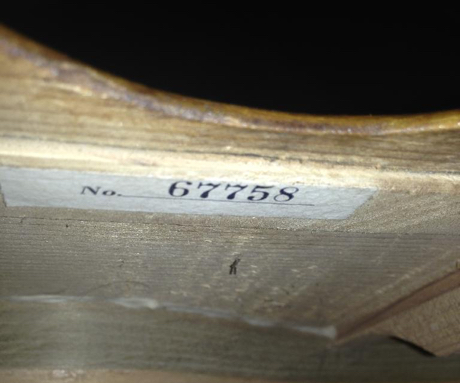
And there is a small, white paper label glued to the inside top next to the soundhole, with "No. 67758" printed in blue – the instrument's SN. Note that the typeface is identical to the larger label on the inside back, suggesting that both labels were printed alongside (using the same letterpress numerating machine).
Now the question: What was the purpose of this extra SN label (also found on other examples)? We can only speculate – here my thoughts: It looks like the labels were applied before the bodies were assembled, possibly serving to identify pairs of tops and backs belonging together within a batch.
This also seems to back our theory that Epiphone's SNs were assigned at an early stage of the production process – long before the instruments were completed, set-up and shipped.
(Oct 14, 2016)